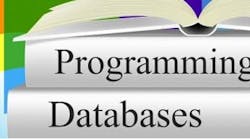Dan Hebert is a former senior technical editor for Control, Control Design and Industrial Networking.
As industrial control hardware from PLCs to IPCs and everything in between becomes ever more powerful, reliable and similar, purchase decisions are more and more driven by software, specifically the PC-based software used to program these industrial controllers.
So we asked OEMs and suppliers to give us their must-have programming software features. This column will look at supplier answers, and my Mojo column in December will summarize OEM views.
All suppliers listed ease-of-use as an important feature, but Jerry Reaves, PLC product manager with AutomationDirect, went deeper. "The end user is a beginner, an expert, or most commonly, the perpetual intermediate," says Reaves. "The perpetual intermediate user interacts with the software on a periodic basis, a profile fitting many OEMs. So if the software is not designed for intuitive use by the intermediate user, then, every time he or she opens the software, new learning is required. When this happens, then no matter how powerful the software is, the user struggles to the point of disliking it."
Reaves says that intermediate users want easy access to the programming software regardless of the revision. "They want to quickly install the software, connect to the controller and start programming, debugging or troubleshooting," Reaves points out. "They don't want to chase different software revisions, buy software upgrades or recite software revision levels to technical support."
Ease of use is also promoted if a supplier has just one controller programming software package for its entire line of related products.
Also Read: Bye-Bye, Windows? So Long, Ladder Programming?
"Programming software should be able to target multiple hardware platforms and processor types from a single development environment. This also should be extendable to new hardware standards such as 64-bit systems and multicore processors," explains Daymon Thompson, TwinCAT product specialist at Beckhoff Automation.
Closely related to ease of use is the capability to connect instantly and automatically to the target controller. "The ability to quickly and effortlessly establish connection with the PLC for programming and debugging is very important, so we designed our programming software to require absolute minimal effort to get the PLC online with the PC-based programming software," notes Don Pham, product specialist at IDEC.
Another widely cited feature is reuse of code. "Code reusability and portability are critical productivity factors for many OEMs, as they adopt concepts of modular code design," says Mike Brimmer, product manager of RSLogix 5000 programming software for Rockwell Automation. "Our software offers key features needed to enable modular automation, library management and system organization, including modular coding constructs and the ability to migrate code easily in order to reuse engineering efforts."
If code is to be reused, then version control becomes critical, Thompson interjects. "Efficient use of engineering resources through collaboration among multiple programmers lowers development time and costs," he says. "This can be done by reusing code from previous projects, as well as by using standard source control tools integrated into the programming environment, such as Team Foundation Server from Microsoft, GIT and Subversion. Source control tools provide archiving of changes over time, allowing the code to be compared, branched/merged and even rolled back. This keeps a history of the code over its lifecycle for future reference and debugging, and it promotes uncomplicated migration of code from one application to the next."
A final feature cited by multiple suppliers is the capability to program the controller with a wide array of programming languages. "Industrial controller programming software must support different programming languages and styles," says Mike Chen, pan-America marketing group manager for Omron Automation and Safety. "Programming standards should be open, allowing engineers to quickly adapt by using existing knowledge. With the influx of highly competitive industrial components and devices, it's critical to have open networking and interoperability to minimize incompatibility."
In short, suppliers say the top five controller programming software features are ease of use, automatic connection to the controller, one programming package for an entire family of controllers, the ability to reuse code and support for multiple programming languages.





